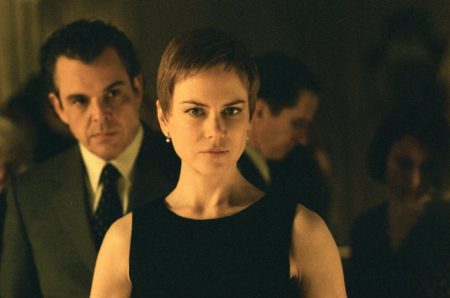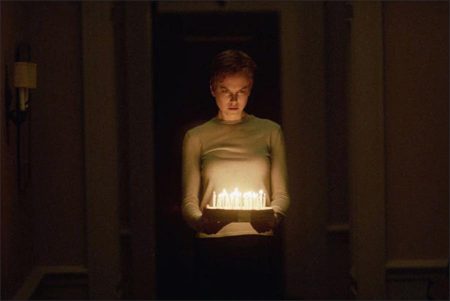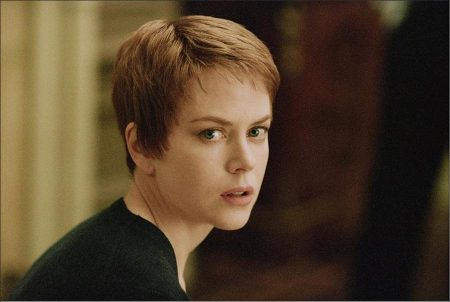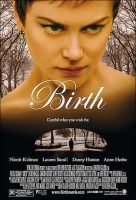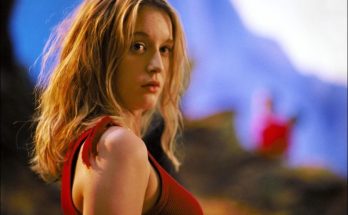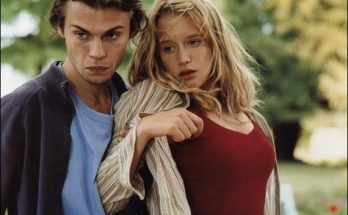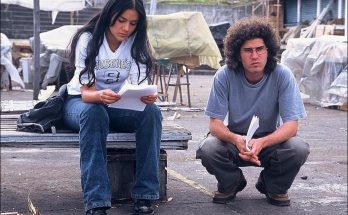About the Production
Birth Movie Trailer. Even before internationally acclaimed commercial and music video director Jonathan Glazer made his mark in feature films with his debut Sexy Beast, which earned Ben Kingsley an Academy Award nomination, the director had the idea for a film which was to become Birth. Glazer discussed his idea for the story, about a young boy who claims to be the reincarnation of a woman’s dead husband, with noted producer Jean-Louis Piel, the producer of the Academy Award winning Burnt By The Sun and a keen admirer of Glazer’s work.
To develop the story, Piel suggested that Glazer meet with distinguished French writer Jean-Claude Carrière, a long-time collaborator with Luis Buñuel in film and Peter Brook in theater. Carrière had also collaborated with the Dalai Lama on two books, including The Power of Buddhism, and was quite knowledgeable on the subject of reincarnation. He was intrigued by Glazer’s unique idea, and the two met in early 2001 to talk about the story. Thus began a dialogue that would continue for some eighteen months, as the two men puzzled out the story and eventually began work on a screenplay.
Says Glazer, “We tried to create a context for the story. It a very exciting period for me and I learned a lot from him.” Glazer traveled frequently to the elder writer’s Paris home to work. “I found in Jonathan a very receptive collaborator,” remembers Carrière. “He was extremely eager, getting up early in the morning to work all day long.”
The two developed a narrative in which a ten year-old boy named Sean appears in the life of Anna, a 35 year-old woman who had been widowed ten years earlier. The child claims to be Anna’s dead husband, who was also named Sean, and knows details about Anna that only her late husband would know. Having this young stranger enter their lives is very unsettling for Anna, her family, and her fiancé, Joseph, whom she plans to marry soon.
Glazer and Carrière felt the story would best be served by a setting that was free of associations with reincarnation. “We didn’t want to write a film about the paranormal. We didn’t want to set it in a place where this kind of story was part of the cultural philosophy or religion,” Glazer explains. “We liked the idea of setting it in a metropolis where there’s an anonymity. We also talked about the idea of a kingdom and the idea of the boy coming into a court. A place where there would be very definite lines between the different worlds the boy and the woman occupied.” New York City, they decided, suited both criteria.
The decision to set the film in New York – a city that speaks to imaginations around the globe – also fit with Glazer’s perception of Birth as a fairy tale. Birth contains a fairy tale’s classic elements: the stranger who upsets the routines of a dignified court, the lovely and isolated princess, an established family threatened by change, a love that seems impossible.
New York, with its aura of history and power, could certainly be seen as a kingdom, a place of mystery and secrets. It had well-tended enclaves of wealth and privilege, which stood in marked contrast to the noisier neighborhoods of ordinary families and businesses. And in Central Park, it had a big swath of unpredictable nature that echoed the enchanted forests of so many storybooks. In giving the story the selfcontainment of a fable, Glazer found that he was able to crystallize its themes of love and belief.
Producers Lizie Gower and Nick Morris, who have worked with Glazer for over a decade at the English production company Academy, came aboard to produce Birth with Piel. After establishing itself as England’s leading producer of commercials and music videos, Academy had set up a features division not long before. Birth became the company’s first feature.
Given that neither Glazer nor Carrière were New Yorkers, it was agreed that an American writer should be brought on to ensure the authenticity of the film’s New York setting. The Academy partners had been deeply impressed by the script for Monster’s Ball, co-written by New York native Milo Addica, which they’d read well before that film was made. In fact, Addica had already begun working with Glazer on a separate project, and everyone felt he was the ideal collaborator to bring the screenplay to its final stage.
Addica was intrigued by the many questions that the script raised, including the possibility of a person dying and being reborn in another body. “Intellectually and logically, people are saying ‘how?’ While it makes no sense, it makes complete sense in the heart,” Addica comments.
He adds, “Birth is about the power of belief. And about the strength of what we believe and where it takes us.” Addica, who began his career as an actor, ultimately took a part in the film, portraying Jimmy the doorman.
Under the care of Carrière, Addica and Glazer, Birth came to occupy its own realm, at once contemporary and mythic. “I think we arrived at a point where all three voices became one voice,” Glazer remarks. “We were all very keen on constructing a love story between a boy and a woman. I think in the end, that’s what we did.”
For the central role of Anna, the filmmakers felt incredibly fortunate when film’s most acclaimed actress, Nicole Kidman, expressed interest in the script. At the time, Kidman had already been nominated for an Academy Award for Moulin Rouge; she would go on to a second nomination, and a win, for The Hours.
Glazer was struck by Kidman’s grasp of the story at their first meeting. “She talked about the script so eloquently,” he remembers. “She really understood what the role was, and understood what I was reaching for.”
As Kidman describes it, “The combination of Jonathan Glazer with this material was really fascinating. It’s obviously so much a part of him.” The actress found the role of Anna exciting from creative standpoint, and is happy to have arrived at a point where such a part was accessible to her. “To be in the position to say, ‘gosh, I can go and explore the psyche of this woman and help breath life into her’ – that’s where I feel incredibly fortunate.”
Respected casting director Avy Kaufman came on to cast Birth, a meticulous process that grew more layered with each addition to the ensemble. Each character is presented with an economy of detail; thus, the actors had to be able to carry their characters’ history as individuals and in their interactions with one another.
At the head of the film’s figurative court is Eleanor, Anna’s mother. From the very first draft of the script, the filmmakers saw one actress as the regal matriarch: screen icon Lauren Bacall. “Lauren Bacall was the only one, in my mind, to play Eleanor,” Glazer asserts.
Bacall committed to the project quickly and enthusiastically. “What always attracts me about being in any movie is the director and the script. And good directors almost always have good scripts. In this case, of course, Jonathan was also one of the writers, which is a marvelous combination.” The actress was also delighted at the prospect of reuniting with Kidman, with whom she had worked on Lars von Trier’s Dogville. “Nicole and I were together in Sweden for two and a half months, so we became friends there. She’s wonderful, a total professional. I’m very, very fond of her.
Recalls producer Lizie Gower, “We had a wall at Avy Kaufman’s office, and we’d cut out the pictures and grow Anna’s family tree. Lauren was right up at the top as the head of the family, and Nicole was on one side. And it was amazing; Nicole and Lauren looked so similar, they could definitely be mother and daughter.”
The casting of Danny Huston as Anna’s fiancé Joseph added new layers of association, in terms of both familial and Hollywood history. As the son of legendary writer/director John Huston and the grandson of actor Walter Huston, he represents a third generation of movie royalty. Though he began his film career as a director, Huston has forged an acclaimed acting career in recent years, starring in such films as Ivansxtc and 21 Grams.
Lauren Bacall had starred in Danny Huston’s feature directorial debut, Mr. North, in 1988 – forty years after she starred in John Huston’s Key Largo, with her husband Humphrey Bogart. She has known Danny Huston all his life. “John Huston was a great, great friend of Bogey’s and of mine,” the actress affirms. Eleanor’s fondness for Joseph echoes Bacall’s own feelings for Huston. “Danny is wonderful – charm just oozes out of him, and wit. And he’s suddenly become an actor, and he’s terrific.”
“Danny came to our attention through Ivanstxc, in which he plays a Hollywood agent who’s dying. He’s fantastic in it, and we thought he was perfect for the role of Joseph,” says producer Nick Morris. “Joseph is from a privileged background, and is kind of easygoing and effortlessly charming. We knew Danny would bring those qualities to the part of Joseph, and he did.”
Huston was intrigued by the way the young boy, Sean, provokes very different reactions from the film’s adult characters. “In the Hindu religion, a god will put on a mask and represent himself in a manner that an ordinary person can understand. In a way, this little boy is a vehicle for the spirit of Anna’s husband, so that all these people can experience this man again in their own different dimensions.”
Finding the right child to portray that little boy proved to be the most difficult casting challenge. Sean may be 10 years old, but he also possesses an adult gravitas that leads Anna to reconsider her course in life. “The whole idea of this love story is that the boy is a pre-man,” notes Morris. “And yet there has to be a manly quality in this little boy, and a kind of power and an assured way of conducting himself, which is not usual to find in a nine or ten year-old little boy.”
In searching for Sean, New York casting director Kaufman and the filmmakers looked at over a thousand boys in the U.S. and Canada, actors and non-actors, in drama schools, Little Leagues, and YMCAs. Finally they found Cameron Bright, a young actor from Canada who turned ten in January, 2003.
Completing the cast are a company of highly acclaimed actors, whose work encompasses American and international filmmaking as well as theatre. To play Clara and Clifford, a married couple who had been good friends with Anna’s late husband, the filmmakers cast Anne Heche, a recent Tony nominee for her Broadway performance in “Twentieth Century,” and Peter Stormare, who appeared in the Coen brothers’ Fargo and Spielberg’s Minority Report. Though Clara and Clifford come from very different environs than Anna, they are the people who knew the dead man best, and Anna turns to them for help with the young Sean.
Arliss Howard (Big Bad Love, Full Metal Jacket) portrays Anna’s brother-in-law, Bob, a doctor who is frankly curious about the strange young boy in love with Anna. The versatile Allison Eliot (Wings of the Dove, The Spitfire Grill) plays Anna’s sister Laura, who is noticeably on edge as she awaits the imminent Birth of her first child with Bob. To portray Mr. and Mrs. Conte, the estranged parents of the young Sean, the filmmakers cast Ted Levine (TV’s “Monk,” The Manchurian Candidate) and Cara Seymour (Adaptation, Gangs of New York).
Finally, in a rare film appearance, theater legend Zoe Caldwell portrays Mrs. Hill, whose long friendship with Eleanor has made her a virtual member of the family. The filmmakers sought out Caldwell at the suggestion of Lauren Bacall, the actress’s close friend in real life. Caldwell ranks among the finest stage actresses ever, renowned for her towering performances in “Medea,” “Othello” and countless other plays.
The cast of Birth has a distinctly international profile: Kidman and Caldwell are Australian; Bacall, Huston, Howard, Heche, Levine and Elliot are American; Bright is Canadian; Seymour is English; and Stormare is Swedish.
The filmmakers’ careful choices resulted in an ensemble that suited the story in all its psychological depth and mystery. “We have this very, very special cast that Jonathan handpicked and deliberated over. Each choice was for specific reasons and you can absolutely feel the detail in his choices,” comments Kidman. “It was just a dream to be around that cast.”
Production on Birth began on location in New York City in February, 2003. “It was important to shoot in winter because visually that’s how I saw the film,” remarks Glazer. “And we got very lucky because we had the coldest winter in, I think, one hundred years!”
Glazer sought to create a cohesive look for Birth, which would encompass everything from cinematography and production design to costumes and hair. To that end, the filmmakers sought out the finest talents in the New York film community, including director of photography Harris Savides, production designer Kevin Thompson and costume designer John Dunn. Savides ranks among the world’s finest and most innovative cinematographers, having created expressive atmospheres for such films as Gus Van Sant’s Palme d’Or winner Elephant.
Savides adopted an unusual technique in order to create Birth’s distinctive visual style. “We worked on the toe, or edge, of the film to give it a look that’s desaturated,” he explains. “It definitely imparts a look and a character to the film that we think evokes the story. Always, the mandate is to serve the story.”
Production designer Kevin Thompson stressed understatement in designing the sets for the Upper East Side apartment where Anna lives with her mother. Thompson, who had been an architect in a previous career, used residential buildings on Fifth and Park Avenues from the 1920s and 1930 as a model for the interiors. In that period, lavish spaces were built to lure the rich out of townhouses and into larger apartment buildings.
With its formal furniture, wallpapered bedrooms, and spacious rooms, Eleanor’s apartment is a model of quiet, confident wealth. The filmmakers wanted the home to be tasteful, but somewhat airless. “It’s very man-made inside the house,” Thompson remarks. “It’s very controlled.”
In contrast to Anna’s patrician home on the Upper East Side, young Sean lives with his mother in a small apartment in a working-class area. But while Sean’s neighborhood had to be very different than Anna’s, the story demanded that it too exist in its own type of bubble. Thompson suggested Brooklyn’s blue collar Greenpoint neighborhood. Though right across the East River from the Upper East Side, Greenpoint does not have a direct subway linking it to Manhattan and therefore has retained much of its working-class character over the years.
“I liked Greenpoint because it’s a nice neighborhood; it’s low-density commercial and it’s mixed. It has schools, churches, residential, and a main street all in one tight little area,” Thompson explains. “It’s not rough or on the edge. We didn’t want Sean to be growing up fast. We wanted him to remain innocent.”
Costume designer John Dunn contributed to the film’s timeless feel with a wardrobe of beautiful but simple clothing, especially for Kidman’s Anna. “For me it was a matter of giving Anna a sort of neutral space, and allowing the character to shine through without drawing too much attention to the clothing,” he reflects.
Keeping Kidman’s clean, unadorned silhouette extended to her hair as well, with the acclaimed actress undergoing another dramatic physical transformation for a film role. Glazer notes that he and Kidman were in agreement about giving Anna a closecropped, face-baring hairstyle. “I wanted to start fresh with Nicole, and she wanted to, as well,” the director recalls. “I wanted to present the character with anonymity. It’s hard to do that with such a famous star, but Nicole’s such a great character actress that she could just completely immerse herself in the role.”
Kidman was also keenly attuned to the needs of her young co-star, Cameron Bright. As producer Morris describes it, “Nicole embraced her relationship with Cameron, and she put as much effort into working with him as doing her own lines. Cameron had many master class lessons from Nicole Kidman in acting, and she was brilliant at it.”
Kidman notes that the role of Sean is would be a challenge for an actor of any age. “It’s difficult for a 10-year-old boy to come in and carry a role with this sort of weight and depth. So you try to support him and help him,” she says. “But Cameron’s got such a special quality, and a beautiful quality that I hope feeds into the character.”
Comments Glazer, “There’s a chemistry there, between Nicole and Cameron, which was critical. It’s such an emotional piece and it relies on this strange interaction between a boy and a woman. As an actor, you’ve got to dig really deep to make it feel real.” The filmmaker praises Kidman for making that leap. “It was exciting to have someone so committed to the story and the role, and wanting to push it as far as it could be pushed.”
The film’s cast praises Glazer as a receptive and generous collaborator. Says Cara Seymour, who portrays Sean’s mother, “Jonathan’s fantastic to work with because his vision is so deep and so rich. He asks so many great questions, and there are so many levels at which he sees the world working.”
Adds Anne Heche, “I am always thrilled to work with incredible directors and actors and be a part of a company that’s doing something that will shake people up a bit. Something that will take people on a journey and evoke an emotional response. If you can be a part of that, you’re one lucky actress.”
For all the story’s emotional intensity, the cast nonetheless managed to enjoy themselves on set. Reports Alison Elliot, “We did a lot of laughing in between takes. I think maybe that had to do not only with our individual energies, and being in a room with intelligent and experienced people; but also with the nature of the story being so surprising and definitely uncomfortable. So in between takes, there was a little bit of an explosion of the energy that was bubbling under the surface. When the cameras were off, we had a really nice time, relating to each other and swapping stories.”
Principal photography for Birth wrapped on May 12, 2003. For Kidman, the film holds a unique place among the stories she has helped tell onscreen. “It’s a deeply personal movie for me,” the actress reflects. “And I’m very happy to have formed the working relationship and friendship with Jonathan, and to have been a part of his vision. It’s been such an honor for me.”
Birth (2004)
Directed by: Jonathan Glazer
Starring: Nicole Kidman, Cameron Bright, Danny Huston, Lauren Bacall, Arliss Howard, Peter Stormare, Anne Heche, Ted Levine, Cara Seymour, Novella Nelson, Zoe Caldwell
Screenplay by: Jonathan Glazer, Jean-Claude Carriere, Milo Addica
Production Design by: Kevin Thompson
Cinematography by: Harris Savides
Film Editing by: Sam Sneade, Claus Wehlisch
Costume Design by: John Dunn
Set Decoration by: Ford Wheeler
Art Direction by: Jonathan Arkin
Music by: Alexandre Desplat
MPAA Rating: R for sexuality.
Distributed by: New Line Cinema
Release Date: November 5, 2004
Views: 264
